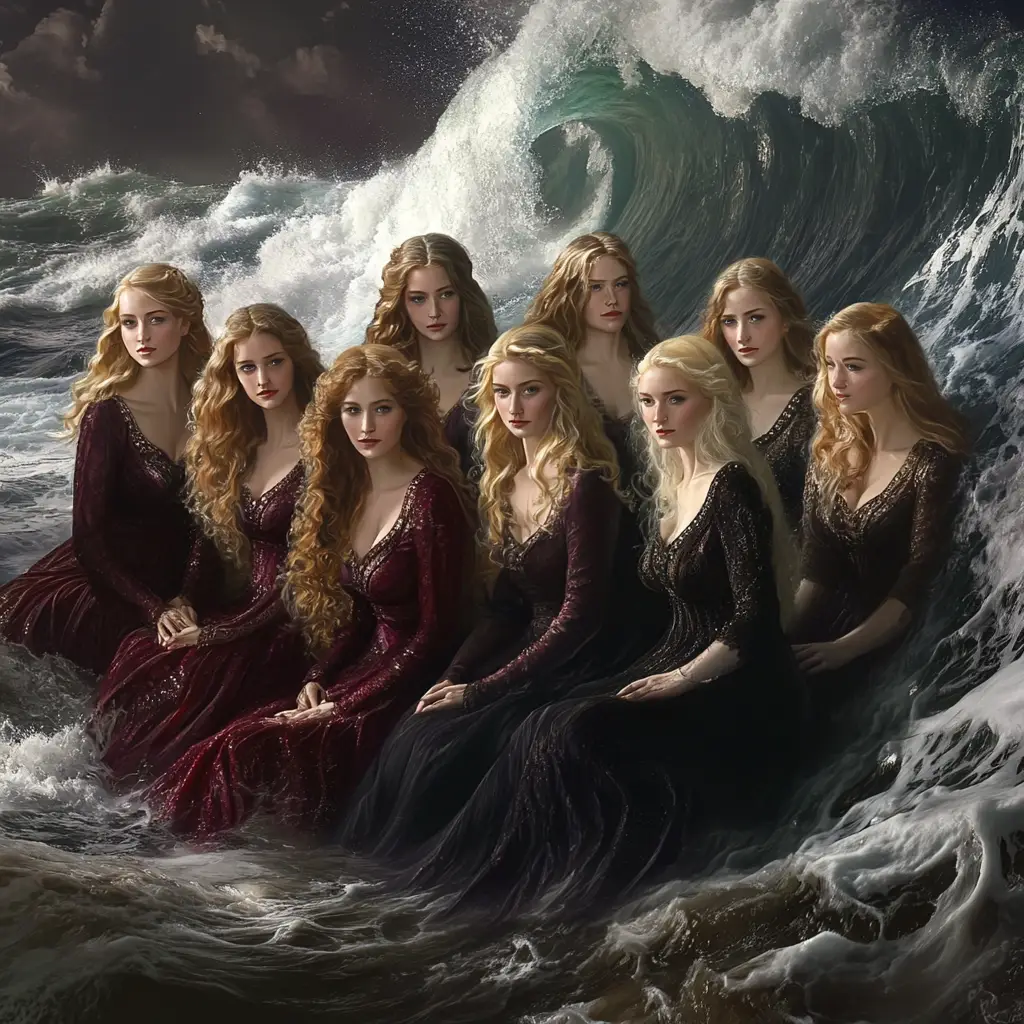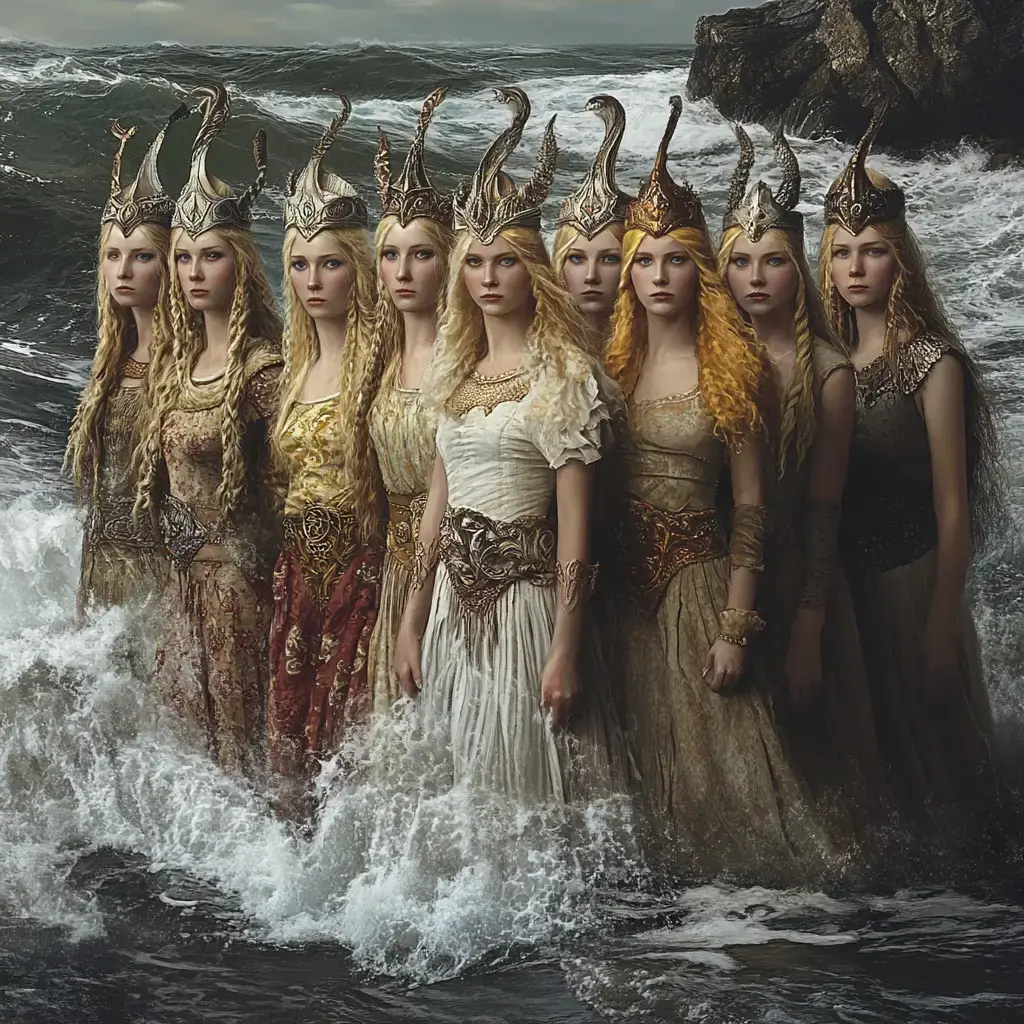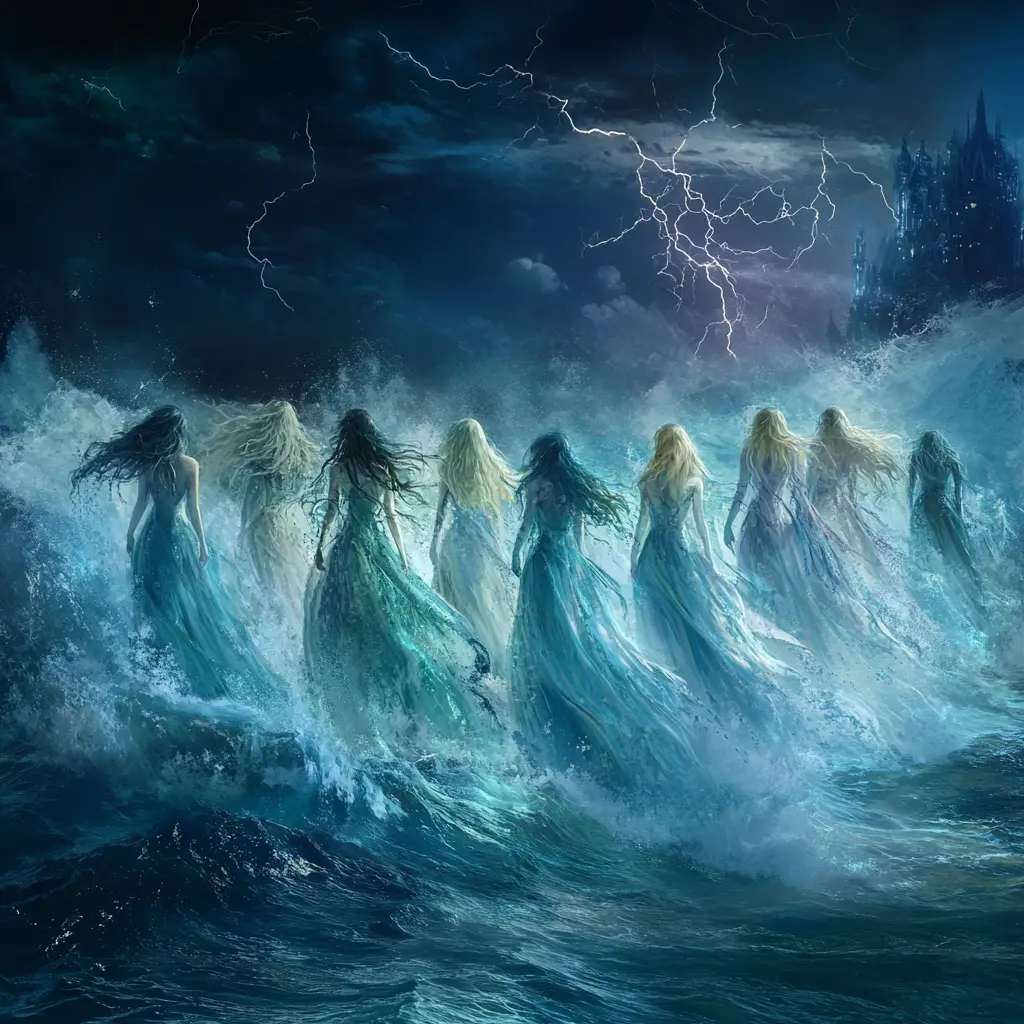The Nine Wave Maidens (sometimes called the Nine Daughters of Ægir and Rán) are important figures in Norse mythology, representing the personification of ocean waves. These daughters, born to the sea giant Ægir and his wife Rán, embody different characteristics of the sea, from its gentler, rhythmic motion to its fierce, violent surges. Although they are not central to many myths, they play a symbolic role in the Norse understanding of the ocean’s power and beauty.
Parents
The Nine Wave Maidens are the daughters of Ægir, the jötunn associated with the more benevolent aspects of the sea, and Rán, the goddess of drowning and the dangerous depths of the ocean. Their parentage reflects the duality of the sea, being both bountiful and deadly.
Personification of Waves
Each of the nine daughters is believed to personify a different type of ocean wave. This symbolism is a reflection of the Norse people’s deep connection to the sea, as the waves were both a vital part of life and a potential threat to those who sailed the oceans.
Though their individual personalities and distinctions are not detailed in myth, they are collectively seen as embodiments of the ocean’s power and unpredictability.
Names of the Nine Maidens
The names of the Nine Wave Maidens are mentioned in some sources, with each name likely reflecting specific qualities of the sea and its waves:
- Himinglæva (Heaven-Brighter)
- Dúfa (The Pitcher)
- Blóðughadda (Bloody-Hair)
- Hefring (Rising Wave)
- Unnr or Uðr (The Frothing Wave)
- Hrönn (The Welling Wave)
- Bylgja (Billow)
- Dröfn (Foam-Fleck)
- Kólga (Chilling Wave)
These names indicate different characteristics of the waves, from foam and rising tides to more violent or chilling waves.
Connection to Heimdall
In some versions of Norse mythology, the Nine Wave Maidens are connected to the myth of Heimdall, the watchman of the gods. It is said that Heimdall was born from these nine sisters, making him a product of the ocean itself. This myth emphasizes Heimdall’s mysterious origins and ties him to the primal forces of nature.
In other versions Heimdall is the son of Odin and his nine mothers one description is they were sea maidens, or jötnar of the waters, named Gjolp, Greip, Eistla, Eyrgjafa, Ulfrun, Angeyja, Imth, Atla, and Jarnsaxa another is that the nine mothers are a reference to the nine realms that Heimdall watched over.
This story suggests that Heimdall, with his unique abilities to see and hear across vast distances, inherits some of the elemental powers of the ocean through his mothers.
Symbolism
The Nine Wave Maidens represent the ever-changing nature of the sea. Some waves are gentle and calming, while others are destructive and fierce, just like the daughters of Ægir and Rán. Their symbolic role reflects the deep respect and fear the Norse people had for the ocean, which was both a source of sustenance and a formidable force to be reckoned with.
Their mythological significance also ties into the Norse cosmological view of the world, where natural forces like the sea and its waves are seen as living entities with power and personality.
Role in Norse Mythology
While the Nine Wave Maidens don’t play central roles in many of the surviving myths, their symbolic presence is important. As personifications of the ocean’s waves, they embody the power, beauty, and danger of the sea, which was a central part of life for the seafaring Norse people. Their parentage and connection to the gods (particularly through Heimdall) link them to the broader themes of nature’s unpredictability, fertility, and destruction.
In summary, the Nine Wave Maidens are a fascinating element of Norse mythology, representing the diverse and powerful nature of the sea through their association with waves, and playing a role in shaping the broader mythological world.


